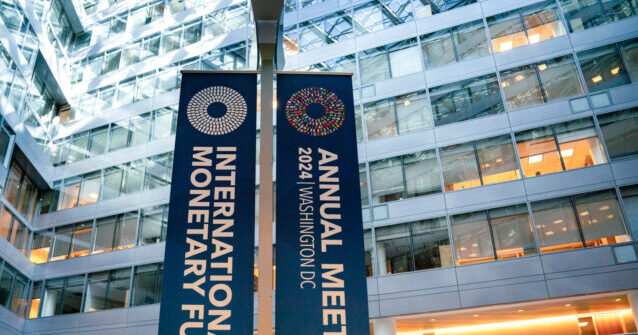The International Monetary Fund (IMF) recently announced that the global fight against inflation is approaching its conclusion, although significant risks are on the horizon due to high debt levels in many countries. The IMF’s latest World Economic Outlook suggests that global inflation could decrease to 3.5 percent by the end of 2025, a substantial drop from the 9.4 percent peak experienced in 2022. This positive development is mainly attributed to effective monetary policies adopted by central banks, which succeeded in raising interest rates without causing recessions. Nonetheless, skepticism regarding the IMF’s forecasts persists, as past predictions about inflation returning to pre-pandemic levels proved overly optimistic and inaccurate. Furthermore, the report indicates that the decline in inflation is primarily due to actions taken by central banks rather than fiscal measures from the Biden-Harris administration, which may have implications for Vice President Kamala Harris in upcoming elections where current voter sentiment toward the economy is low.
The United States is positioned as a leader among advanced economies, with its economy projected to expand by 2.5 percent in the fourth quarter of this year, spurred by robust consumer spending and a notable rise in nonresidential investment, particularly in infrastructure and green energy sectors. Investment spending in the U.S. is expected to grow by 4.5 percent this year, surpassing the stagnation or decline seen in other advanced economies. This trend of capital formation is anticipated to persist, with the IMF forecasting U.S. growth at 1.9 percent in 2025, compared to only 1.7 percent for other advanced nations. The U.S. economic resilience significantly stems from its energy independence, made possible through advancements in extraction technologies like fracking, which shield it from global energy price shocks that have adversely affected European nations.
In contrast, European countries continue to encounter elevated energy costs that hinder their economic growth, with projections for the eurozone’s growth remaining stagnant at around 1.2 percent this year. The disparity in energy prices underscores the challenges that European businesses face while American firms benefit from stable energy prices, enabling them to concentrate on boosting productivity. Meanwhile, geopolitical tensions, including ongoing conflicts in the Middle East and the war in Ukraine, pose risks of reigniting inflation by pushing food and energy prices upward. The potential for tariffs under a hypothetical Trump administration adds another layer of uncertainty to the economic landscape, although Trump argues that his tariffs would promote freer trade instead of inciting a trade war.
The IMF also raised concerns about the high debt levels across numerous countries, following pandemic-related spending. Such substantial debt could restrict nations’ abilities to respond effectively to future economic challenges, thereby hampering growth and recovery efforts. While the U.S. shows strong growth, countries like China are facing significant hurdles, with growth expected to slow to 4.5 percent this year amid a troubled housing market and waning consumer confidence. Moreover, advanced economies as a whole are grappling with sluggish growth and persistent debt issues, with overall growth projections for wealthy nations hovering around 1.9 percent this year, underscoring the complex economic environment many countries navigate in the post-pandemic era.
Despite the IMF’s announcements, it is essential to recognize that while strides have been made in controlling inflation, new challenges loom on the horizon. The report emphasizes the necessity for cautious policymaking and vigilance in the face of rising geopolitical tensions and escalating debt levels, which have the potential to destabilize the hard-won progress achieved in recent years. As the global economy emerges from the pandemic’s long shadows, the interconnectedness of various economic indicators—ranging from inflation rates to investment levels, consumer confidence to geopolitical threats—must be diligently monitored to avoid regression into economic instability.
In conclusion, as the world nears the final stages of the inflation battle, the IMF’s insights offer critical guidance. While the U.S. shines as a beacon of growth and productivity amid advanced economies, the challenges faced by other nations, especially in Europe and China, serve as reminders of the intricate economic dynamics at play. Moving forward, the effectiveness of policymaking on both national and global scales will play a pivotal role in navigating through ongoing uncertainties and safeguarding the progress made in stabilizing inflation and fostering economic growth. A vigilant approach towards economic indicators, coupled with strategic responses to geopolitical tensions and fiscal challenges, will be essential in supporting a stable and prosperous global economic landscape.

